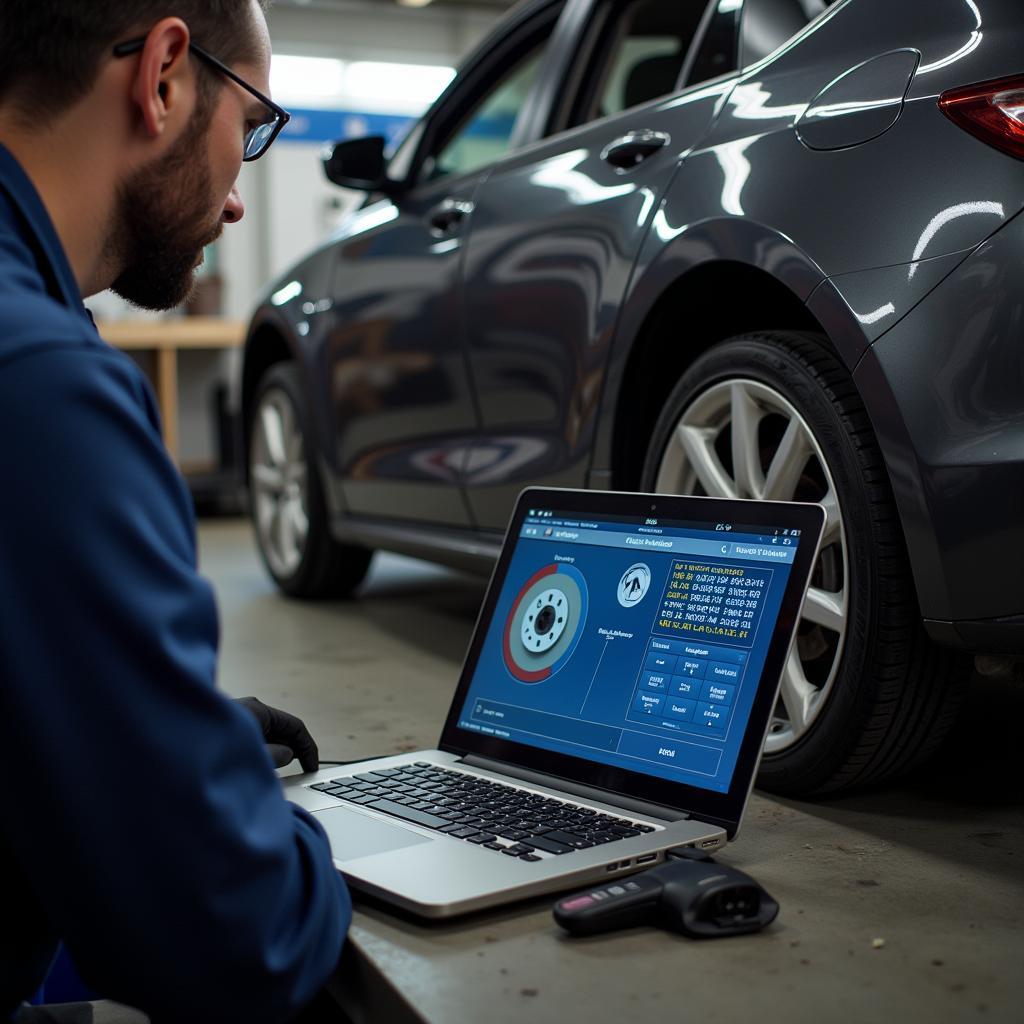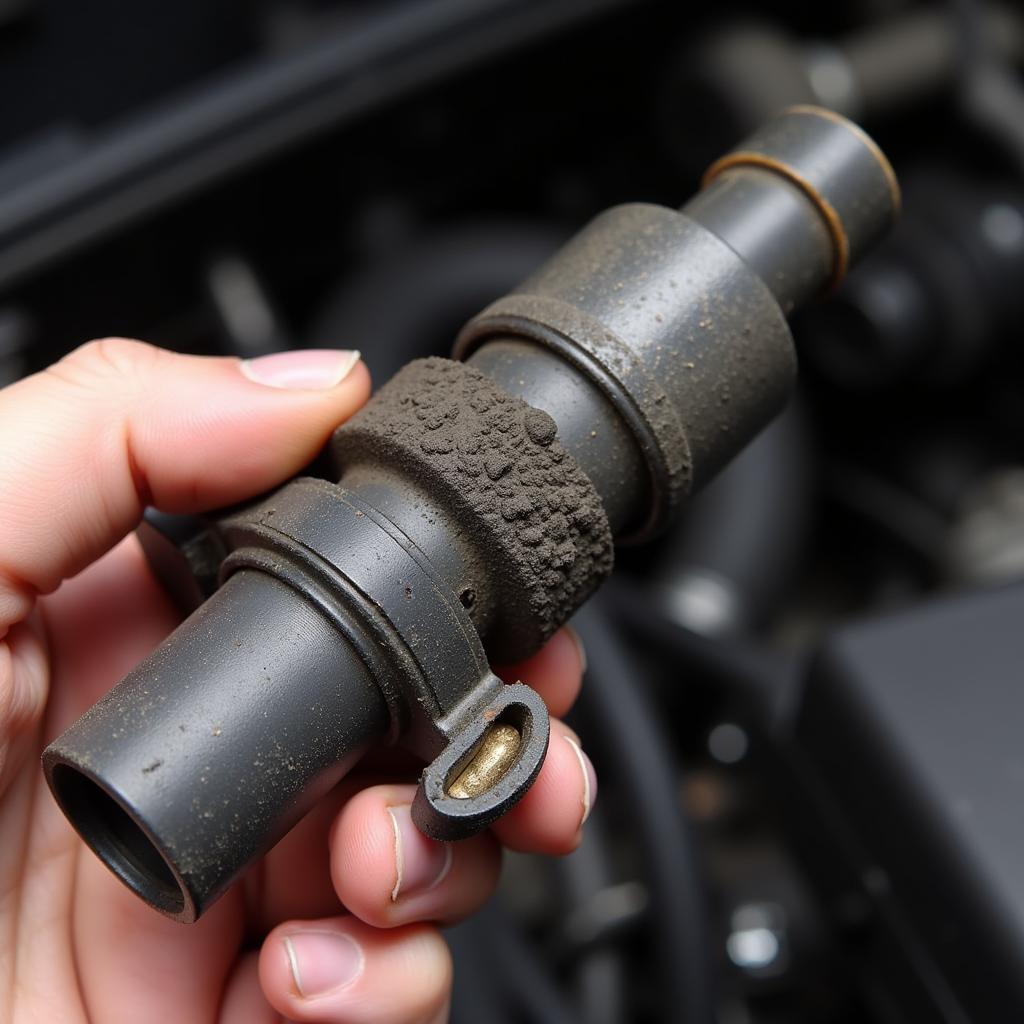The dreaded brake pad monitoring warning light, a beacon of potential car troubles, illuminating your dashboard. While it can be alarming, understanding this warning light and the actions you need to take can save you from headaches down the road.
Understanding Your Brake Pad Monitoring System
Modern vehicles are equipped with a brake pad monitoring system designed to alert you when your brake pads are nearing the end of their lifespan. This system utilizes sensors, typically embedded within the brake pads themselves, to measure the pad’s thickness. When the brake pad material wears down to a certain point, the sensor triggers the warning light on your dashboard.
What Triggers the Brake Pad Monitoring Warning Light?
There are several reasons why your brake pad monitoring warning light might illuminate:
- Worn Brake Pads: The most common culprit, worn brake pads, trigger the warning light when they reach a predetermined minimum thickness.
- Faulty Sensor: Like any electrical component, the sensor itself can malfunction. A short circuit, broken wire, or corrosion can cause a false positive.
- Worn Brake Rotor: In some cases, a severely worn brake rotor can interfere with the sensor’s operation, triggering the warning light.
- Low Brake Fluid: While not directly related to the brake pads, low brake fluid can also illuminate the brake warning light. This is a serious issue that requires immediate attention.
What to Do When the Warning Light Comes On
Ignoring a brake pad monitoring warning light can lead to more extensive and costly repairs down the line. Here’s what you should do:
- Check Your Brake Pads: If you’re comfortable doing so, visually inspect your brake pads for wear. Look for a significant decrease in pad thickness.
- Consult a Professional: If you’re unsure about the condition of your brake pads or suspect another issue, consult a qualified mechanic specializing in automotive diagnostics. They can accurately diagnose the problem using specialized equipment.
- Don’t Delay Repairs: Driving with worn brake pads is dangerous and can lead to rotor damage, reduced braking efficiency, and even brake failure.
Remote Diagnostics and Software Solutions
Advancements in automotive technology have paved the way for remote diagnostics and software solutions to address brake system issues. Here’s how these services can help:
- Remote Diagnostics: Qualified technicians can remotely access your vehicle’s computer system to retrieve diagnostic trouble codes, providing insights into the root cause of the warning light.
- Software Updates: Manufacturers may release software updates to improve the accuracy and performance of brake pad monitoring systems.
 Mechanic performing remote diagnostics on brake system using a laptop and specialized software, analyzing data to identify the root cause of a brake pad monitoring warning light.
Mechanic performing remote diagnostics on brake system using a laptop and specialized software, analyzing data to identify the root cause of a brake pad monitoring warning light.
For example, Chevy Malibu brake warning light issues can sometimes be resolved with a simple software update. These updates can be installed remotely, saving you a trip to the mechanic.
“Remote diagnostics and software solutions are changing the landscape of automotive repair,” says John Smith, Senior Automotive Engineer at XYZ Auto Technologies. “These advancements offer car owners convenient and efficient options to diagnose and resolve brake system problems.”
Preventing Future Brake Pad Issues
Proactive maintenance is key to preventing premature brake pad wear and potential issues:
- Regular Brake Inspections: Inspect your brakes every 12,000 miles or as recommended in your owner’s manual.
- Gentle Braking Habits: Avoid harsh braking whenever possible. Gradual braking reduces wear and tear on your brake pads and rotors.
- Quality Brake Pads: Invest in high-quality brake pads from reputable brands.
Conclusion
The brake pad monitoring warning light serves as a crucial safety feature, alerting you to potential issues with your braking system. By understanding the common causes of this warning light and taking prompt action, you can ensure optimal braking performance and your safety on the road. If you’re unsure about addressing brake system concerns yourself, don’t hesitate to seek assistance from a qualified mechanic specializing in automotive diagnostics, programming, and software solutions.

